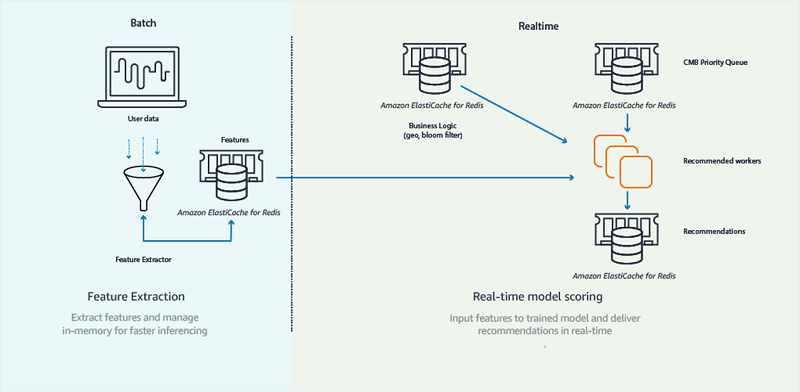AWS Database Blog
Tag: Amazon ElastiCache
Integrating Amazon ElastiCache with other AWS services: The serverless way
In this post, I describe a simple way to transfer data from ElastiCache for Redis clusters to other AWS database services using AWS Lambda functions.
Five workload characteristics to consider when right sizing Amazon ElastiCache Redis clusters
This post discusses the process to determine the right node size and cluster topology for your Amazon ElastiCache workloads, and the important factors to consider. This post assumes you have a good knowledge of Redis and its commands and have an understanding of Amazon ElastiCache for Redis and its features such as online cluster resizing, […]
Building resiliency at scale at Tinder with Amazon ElastiCache
This is a guest post from William Youngs, Software Engineer, Daniel Alkalai, Senior Software Engineer, and Jun-young Kwak, Senior Engineering Manager with Tinder. Tinder was introduced on a college campus in 2012 and is the world’s most popular app for meeting new people. It has been downloaded more than 340 million times and is available […]
How to work with Cluster Mode on Amazon ElastiCache for Redis
In this post, I will describe how you can leverage ElastiCache for Redis with cluster mode enabled to enhance reliability and availability with little change to your existing workload. Cluster Mode comes with the primary benefit of horizontal scaling up and down of your Redis cluster, with almost zero impact on the performance of the cluster, as I will demonstrate later. If you have ever encountered a Redis cluster that is over or under-provisioned or just want to better understand its inner workings, please read on.
Automated query caching into Amazon ElastiCache for Amazon RDS, Amazon Aurora and Amazon Redshift
This is a guest blog post by Erik Brandsberg, CTO at Heimdall Data, in partnership with AWS Technical Evangelist Darin Briskman. Heimdall Data is an AWS Advanced Technology partner who in their own words “offers a database proxy on the AWS Marketplace that supports SQL query caching into Amazon ElastiCache for Redis without code changes. […]
Configure Amazon ElastiCache for Redis for higher availability
This post was updated 3/10/2021 to include additional features and enhancements to Amazon ElastiCache for Redis. Amazon ElastiCache has become synonymous with real-time applications. Redis’ high performance, simplicity, and support for diverse data structures have made it one of the most popular non-relational key value stores. With the growth of business-critical, real-time use cases on […]
Powering recommendation models using Amazon ElastiCache for Redis at Coffee Meets Bagel
Coffee Meets Bagel (CMB) is a dating application that serves potential matches to over 1.5 million users daily. Our motto is “quality over quantity” because we focus on bringing a fun, safe, and quality dating experience that results in meaningful relationships. To deliver on these promises, every match we serve has to fulfill a strict […]
Monitor Amazon ElastiCache for Redis (cluster mode disabled) read replica endpoints using AWS Lambda, Amazon Route 53, and Amazon SNS
In Amazon ElastiCache for Redis, your applications use the provided endpoints to connect to an ElastiCache node or cluster. According to Amazon ElastiCache for Redis Components and Features in the ElastiCache for Redis User Guide, a multiple-node Redis (cluster mode disabled) cluster has two kinds of endpoints: “The primary endpoint always connects to the primary […]
How to build a real-time sales analytics dashboard with Amazon ElastiCache for Redis
Most often, when we discuss Amazon ElastiCache, it is in the context of enhancing the performance of read-heavy database workloads. We update our applications to employ a read-through or write-through pattern to keep data in the cache fresh and ease the burden on the database. When used in this context, ElastiCache accelerates your high volume […]
Latency reduction of hybrid architectures with Amazon ElastiCache
A challenge that some organizations face when moving to the cloud is how best to migrate or integrate old legacy infrastructure with restrictive licensing to an environment that offers a breadth of functionality and pay-as-you-go pricing. AWS provides many options to help customers in their analysis and planning. One common approach is to establish a […]









